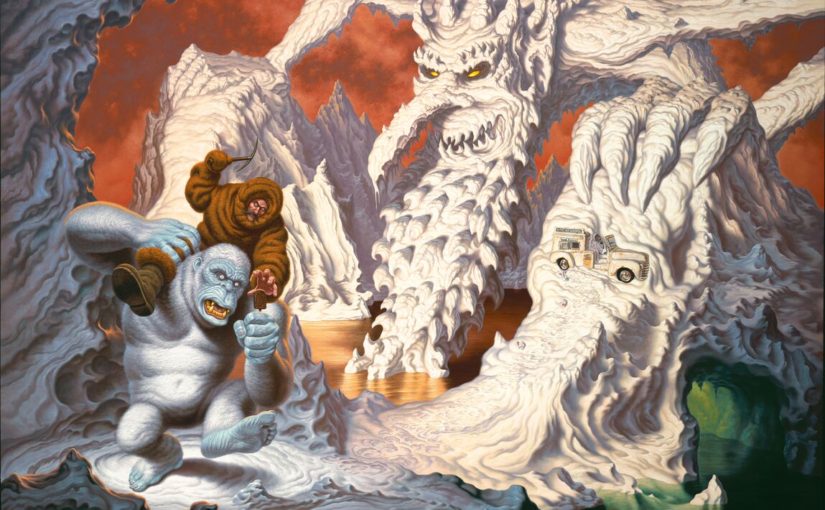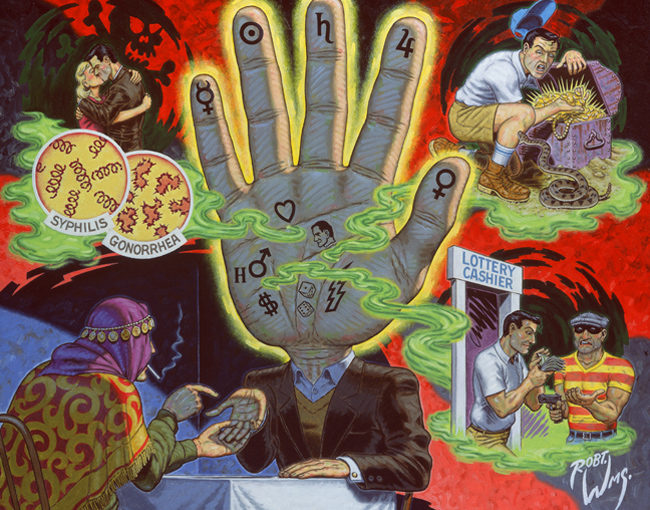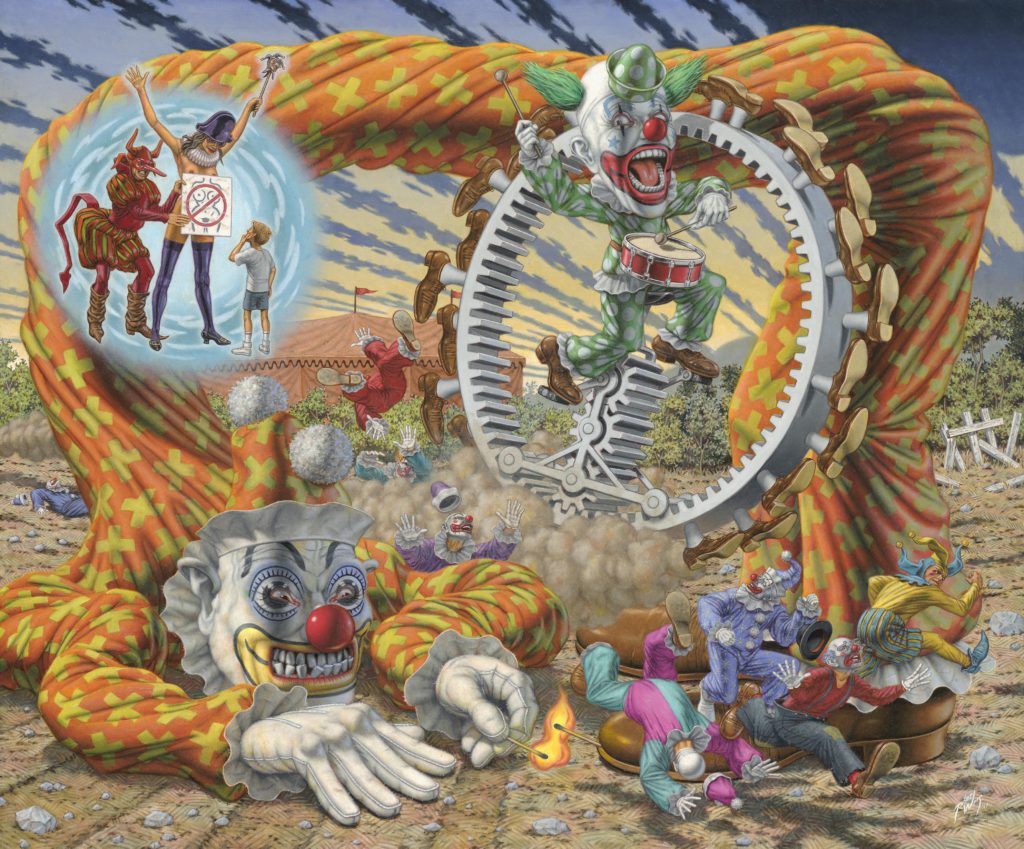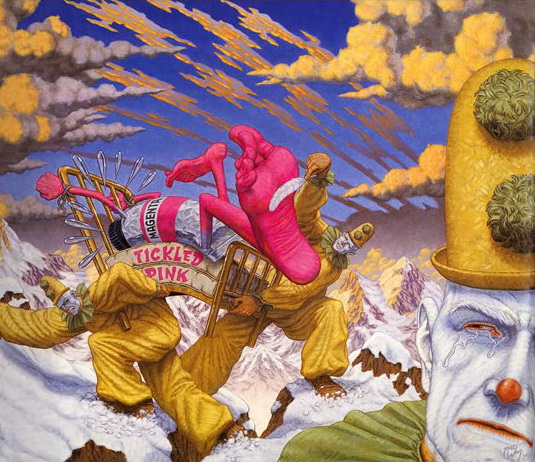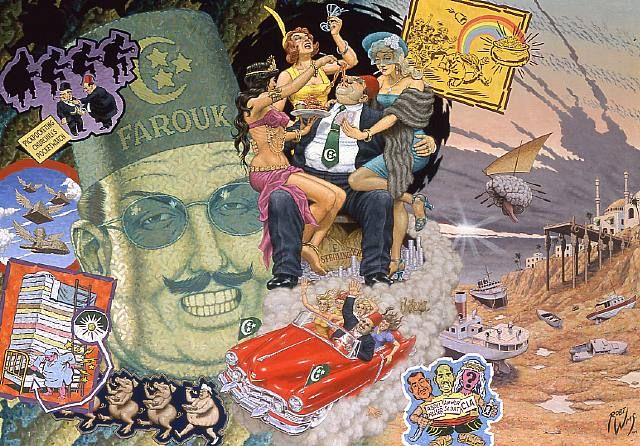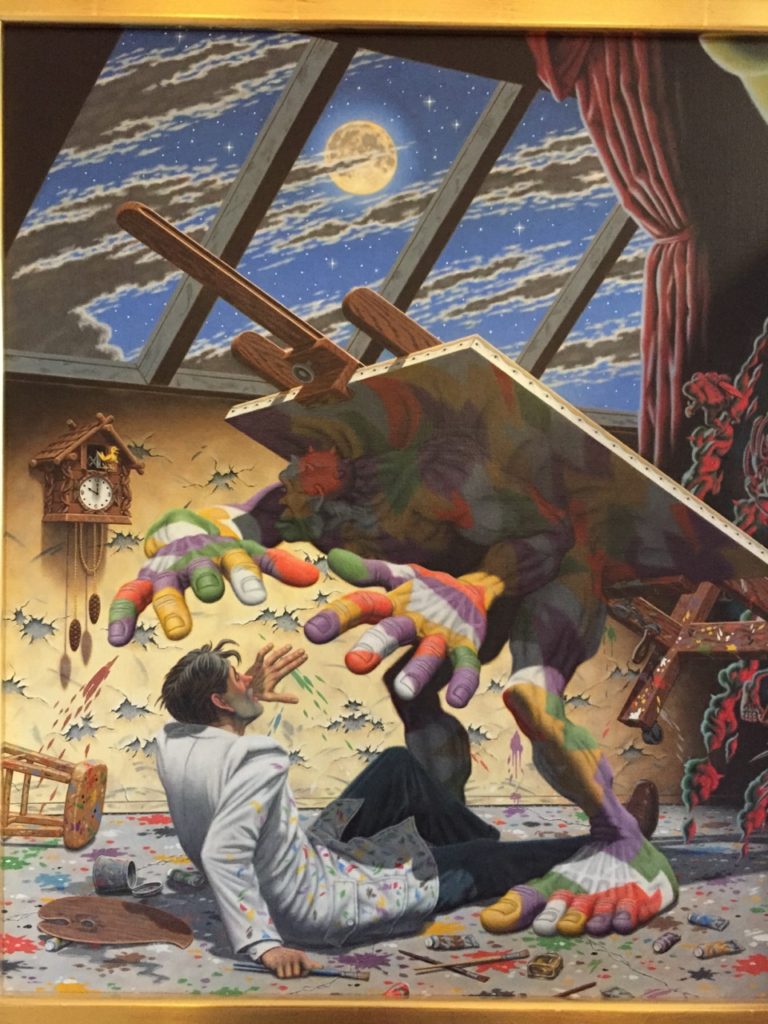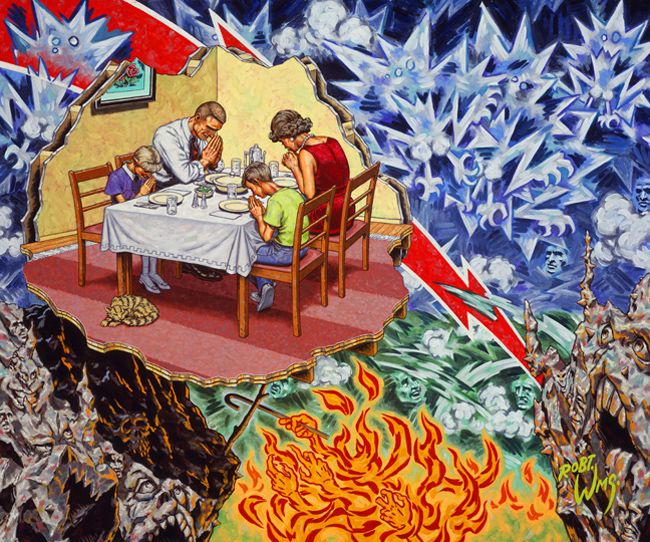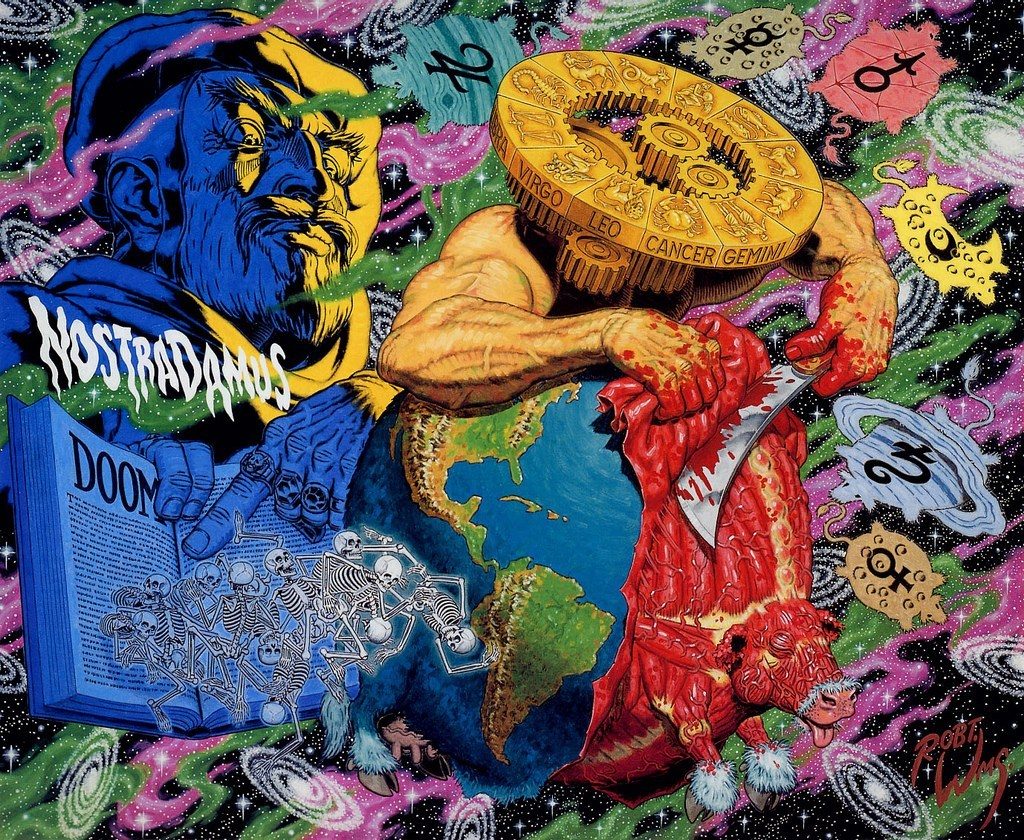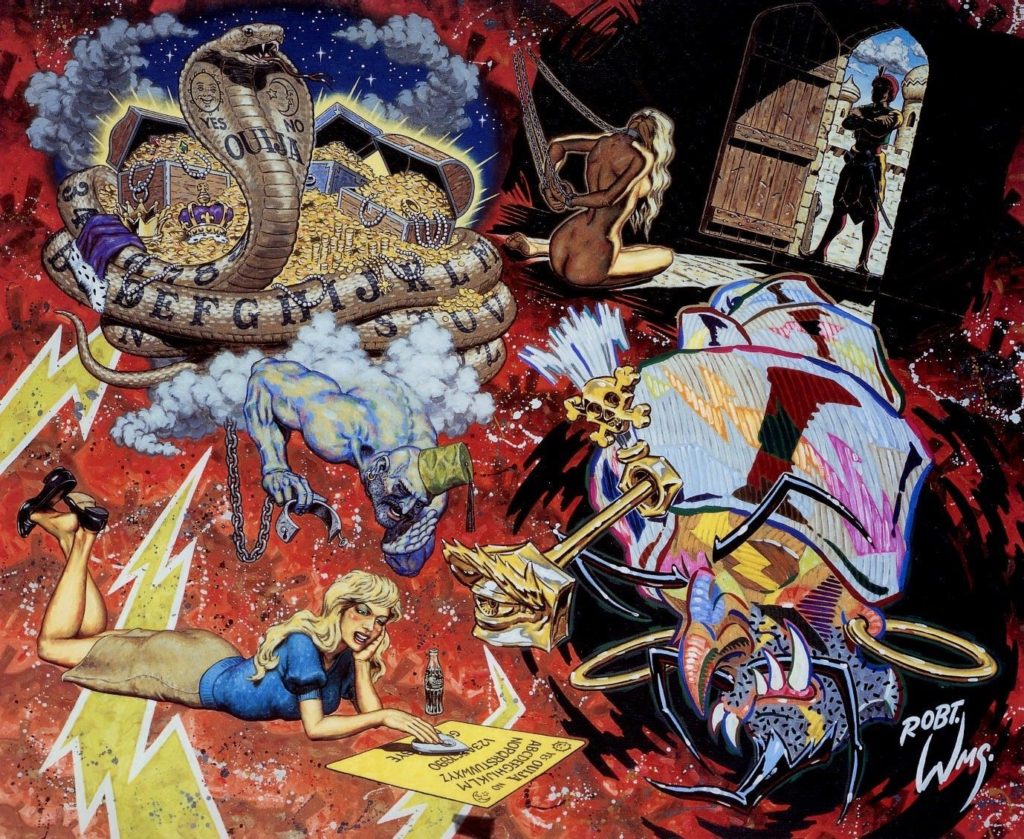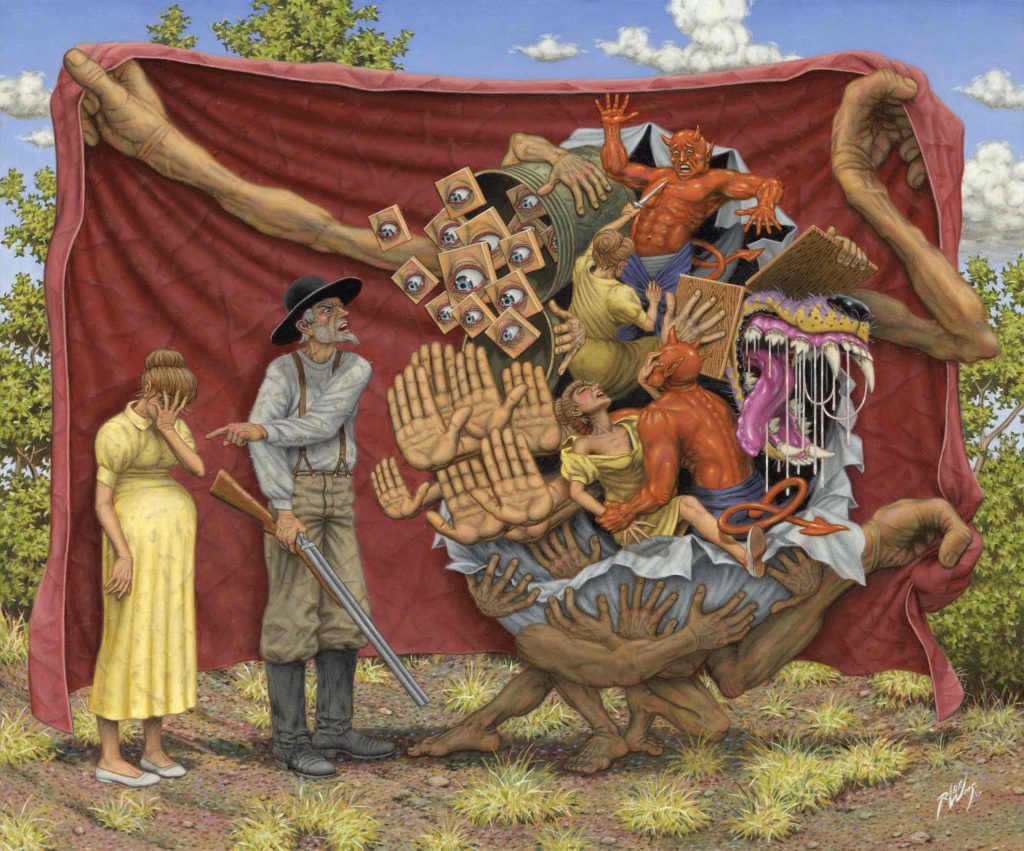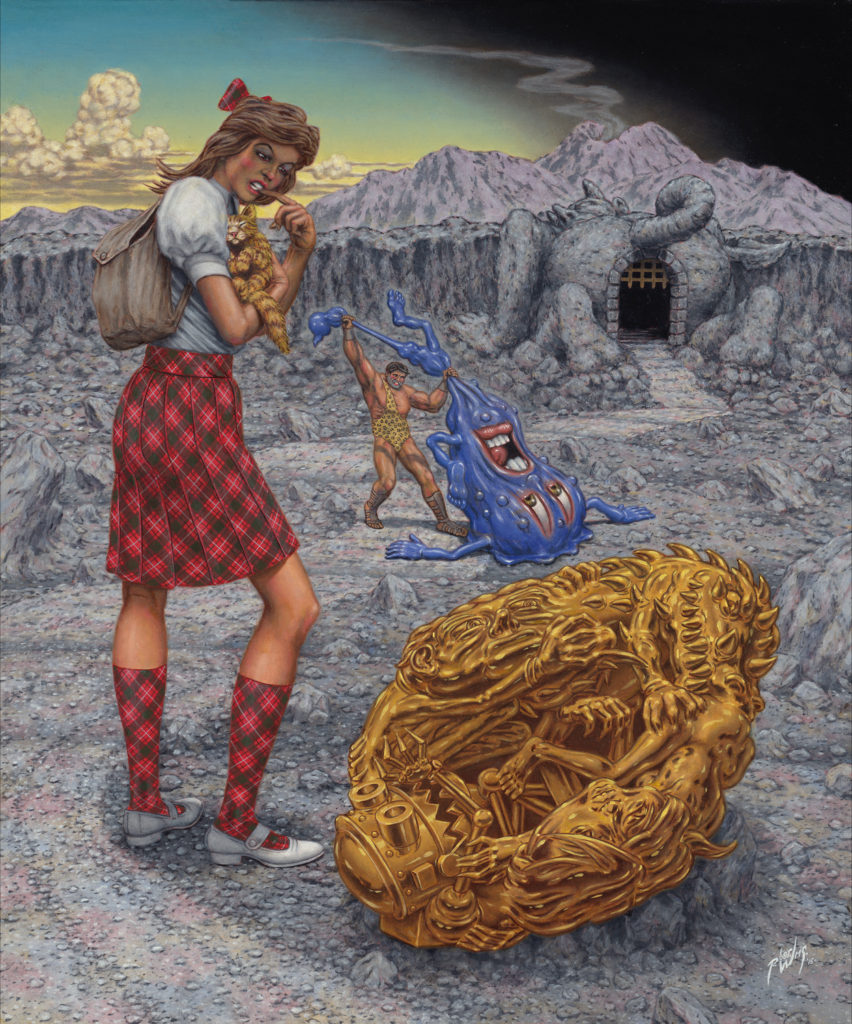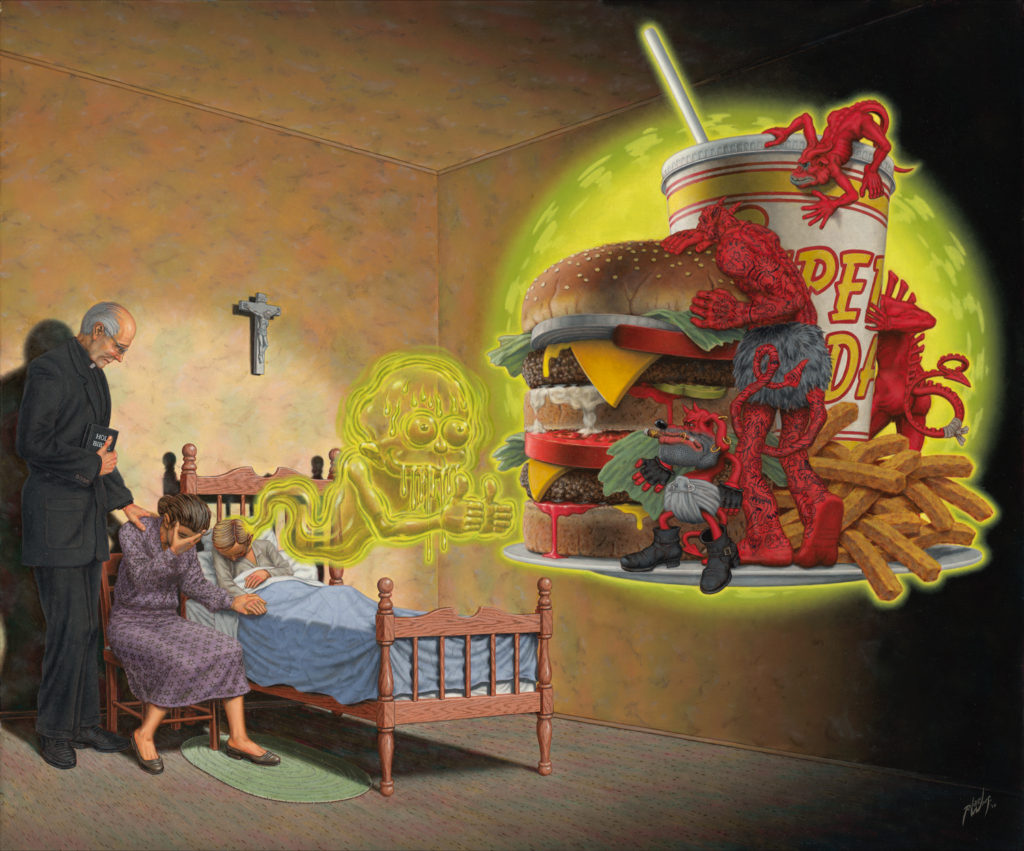Today’s artist is the one the only, the amazing painter that turns pop-culture into surreal art, Todd Schorr! Everything he gets his brushes on are simply amazing. All his paintings have so much detail that every time I look back at the paintings I always notice something new to trigger my amazement.
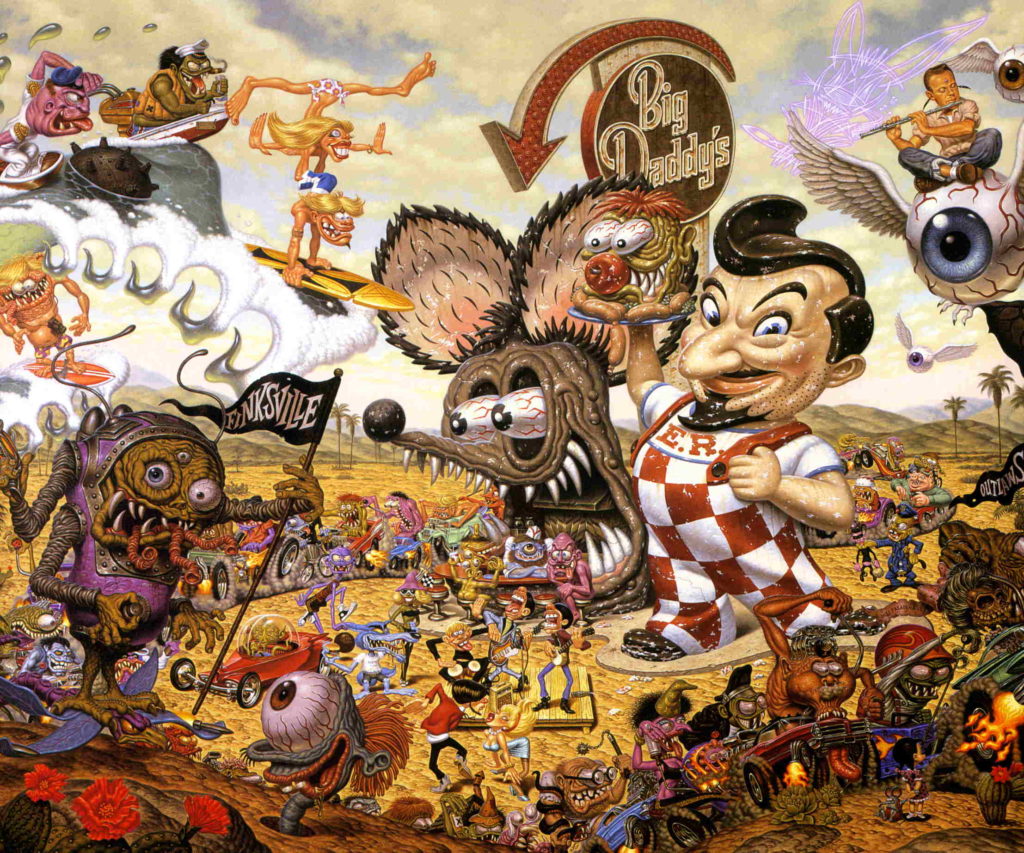
Artist Todd Schorr has earned broad recognition as a master painter. The style and influences of his complex narrative painting have been attributed from a multitude of sources from Northern Renaissance to 18th and 19th century Romantic painters.
Todd Schorr is an American artist and one of the most prominent members of the "Lowbrow" art movement or pop surrealism. Combining a cartoon influenced visual vocabulary with a highly polished technical ability, based on the exacting painting methods of the Old Masters, Schorr weaves intricate narratives that are often biting yet humorous. -Wikipedia
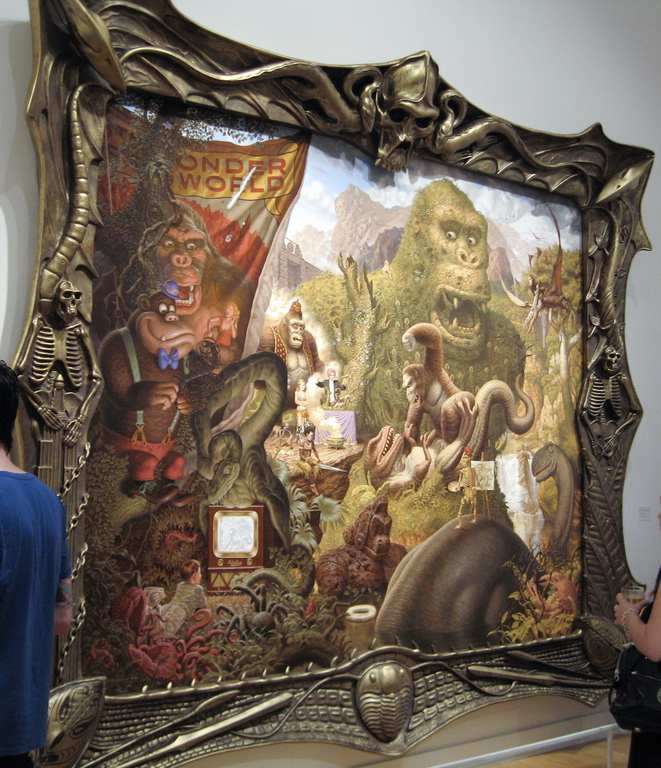
Todd Schorr is a living American artist and one of the heavy weights of the “Lowbrow” (pop surrealism) art movement. Keep that phrase “pop surrealism” in mind when you’re looking at his art. Similar to Alex Grey, Todd Schorr‘s pieces are vivid, colorful, and packed with impressively complex and detailed images. Thematically, his art deals with some prominent pop culture themes ranging from fairy tales to television and movie references, from alien encounters to not-so-subtle commentary on modern society.
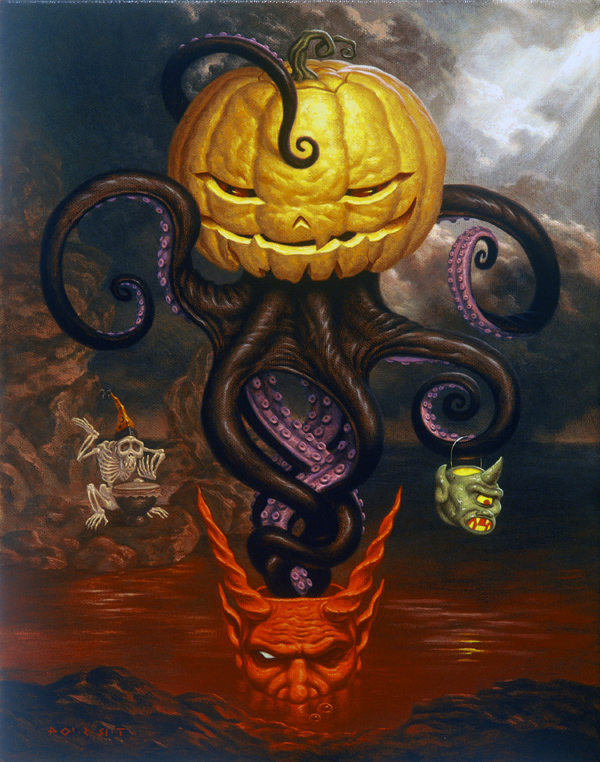
"There is still a persistent reluctance on the part of many of these larger institutions in acknowledging this art, but I really feel they’re shooting themselves in the foot on this point, and fail to realize the broader audience this art has the potential to bring in. I recently witnessed a rather humorous situation at the Museum Of Art in New York where the gallery displaying surrealist art was jam-packed with onlookers, while the gallery containing work of recent conceptual work was occupied solely by a young mother changing the diaper of her baby infant. Does that not tell you something?" -Todd Schorr quoted in Arrested Motion
Todd Schorr was born in New York City in 1954 and grew up in Oakland, New Jersey. His parents enrolled him in art classes when he was five, and understandably he claims influences from movies such “King Kong” and the early animated cartoons of Walt Disney and Max Fleischer were (and apparently still are) a driving force in his creative visions.
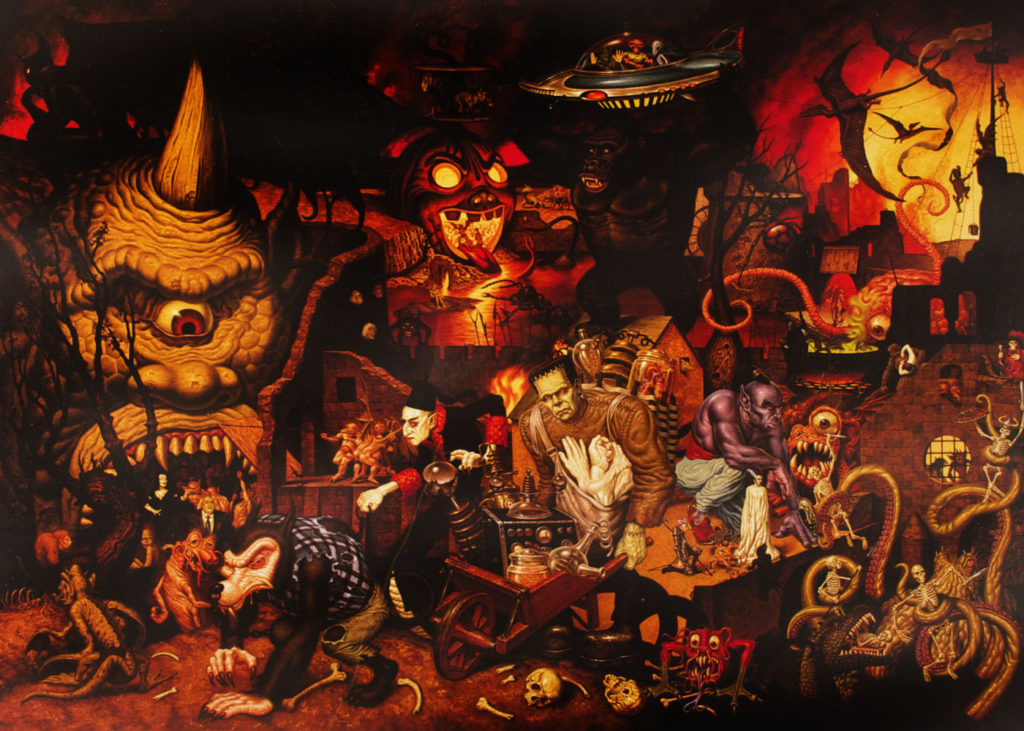
By the late 1960’s and early 1970’s Schorr was drumming in bands and found further influences in the psychedelic music posters and underground comics coming out of the west coast art scene. In 1970 he visited the Uffizi gallery in Italy and began to formulate an idea of combining cartoons with the painting techniques of the Old Masters.
“Like any artist of worth, it took many long years of struggle and investigative thought along with trial and error as well as constant honing of technique to reach the point where I felt I had created a language which, when spoken well, would command some semblance of purpose. I work in what is best described as a surreal style but filtered through the mind and eyes of what is, for better or worse, uniquely American.” – Todd Schorr
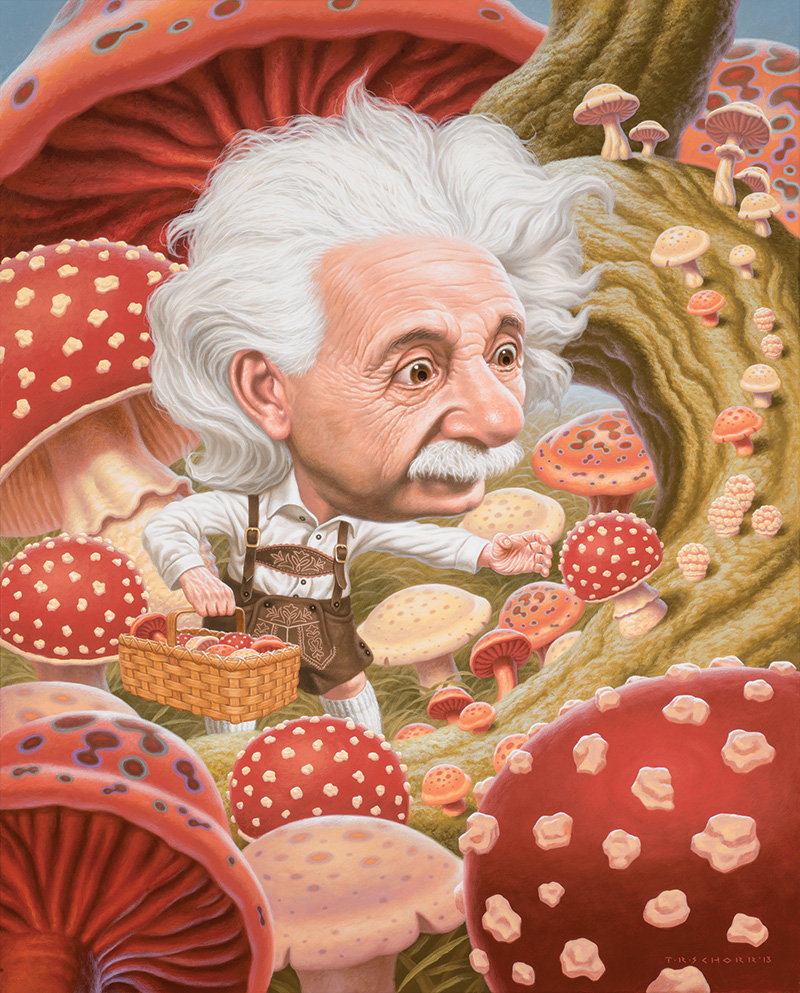
In 1972 he entered the Philadelphia College of Art (now the University of The Arts) with designs towards being a painter, but he was directed instead to the illustration department.
Schorr began doing professional illustration while still in college, and soon after graduating in 1976 he moved to New York City where he provided work for a wide variety of commercial projects including album covers for AC/DC, movie posters for George Lucas and Francis Ford Coppola, and covers for Time magazine that now reside in the permanent collection of the Smithsonian National Portrait Gallery in Washington, DC.
Yeah, Schorr's stuff is just uh-maze-ing. Really on a whole other level, there also HUGE. I think that first one I posted is 90-something inches across. -Comment found on Universal Monster Army
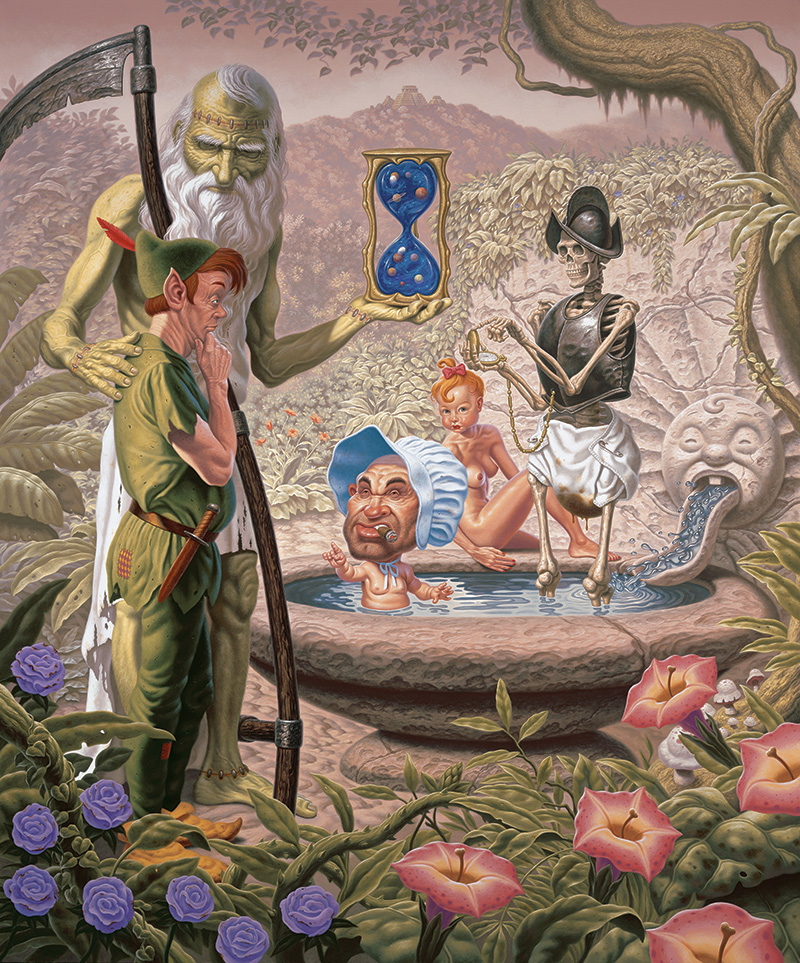
AM: One of the things that people love about your work are your many references to pop culture. Can you tell us a little about the significance of this aspect of your paintings? Schorr: I consider myself a cultural anthropologist and use pop culture reference points in my work because they strike an emotional resonance with people while also forming a common pictorial language that’s accessible to just about everyone. They get the viewer’s attention and pull them into the little scenarios that I’ve laid out before them on my canvases. Every viewer brings their own personal perceptions to a depiction of say, Fred Flintstone, but the context he’s been placed in and how he’s been altered physically, triggers new associations in the viewer that didn’t exist before. Conversely, if a depiction of a generic cave man was used in the composition, it might not generate the same intimate emotional response. I try to get the essence of the pop culture elements I’m referring to but alter the perception of that image.
Schorr works in acrylic, creating complex narrative paintings of his favorite childhood characters — Popeye, Tony the Tiger and King Kong — with a technical bravado borrowed from the Old Masters.
Often, they pay humorous homage to his baby boomer childhood or a revered painter, as in “Parade of the Damned” (2005), based loosely on the 1562 Flemish masterpiece by Bruegel called “Mad Meg,” which depicts a harridan who drives everyone around her crazy.
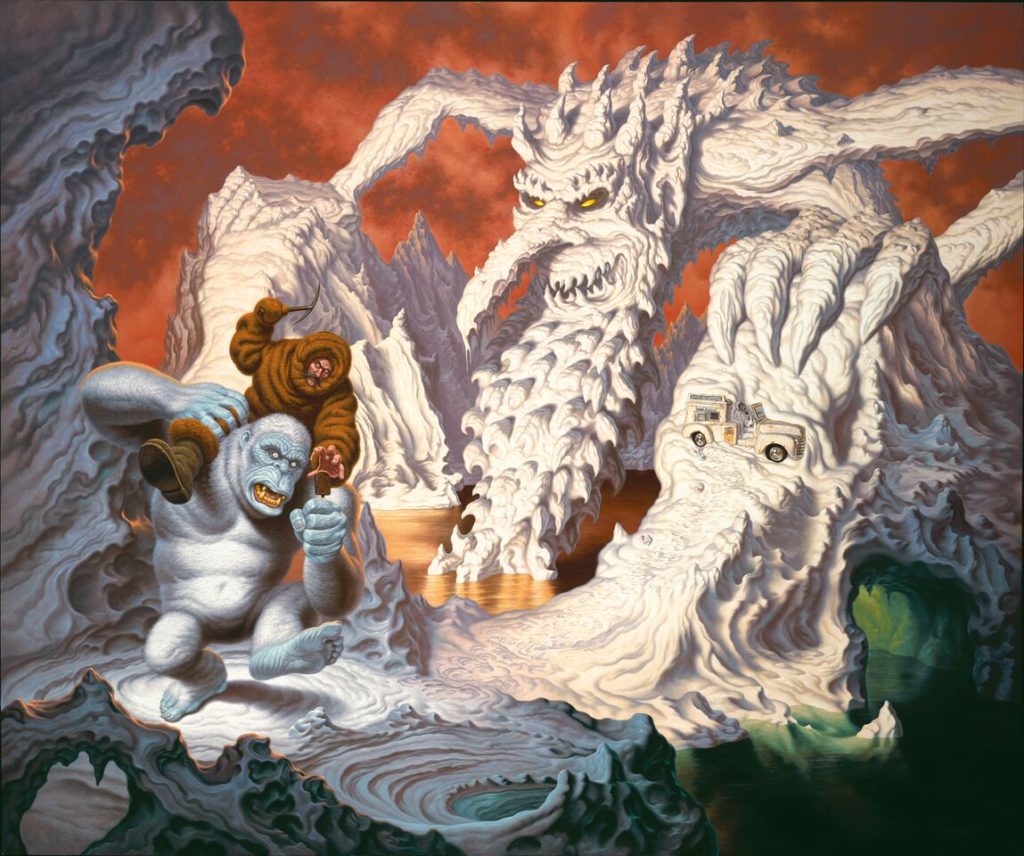
In Schorr’s version, the monsters all come from the world of pop culture: Frankenstein and King Kong join a cast of fiends as they casually make their way toward the mouth of hell, where they’re warmly welcomed by Morticia of the Addams Family.
Sometimes, his works have a distinctly sociopolitical undertone, as in “The Hydra of Madison Avenue” (2001), a bacchanalia display of old Saturday morning TV commercial characters — Tony the Tiger, Smokey Bear, Mr. Clean — all sprouting from a many-headed beast as the Jolly Green Giant struts alongside a pink fairy tale castle spewing a cloud of black smoke.
“There’s an undercurrent of malice going in,” acknowledges Schorr, speaking by phone from Los Angeles. “The way I’m presenting it, it’s a serious presentation, but it has an absurdity built into it. I’ve got these ridiculous cartoon characters, but I’m trying to paint them the way an Old Master would paint them.”
The painting is at once deeply personal and sociopolitical: “It’s about advertising, of course,” he says. “You cut the head off, and it keeps coming back. I have mixed feelings about advertising. I think it’s a horrible profession, but at the same time it has given us all these fascinating characters.”
Schorr, 54, grew up in New Jersey, immersed in the world of cartoons, commercials and Hollywood horror films. But it was after he went to Europe as a teenager and visited the Uffizi Gallery in Florence, Italy, that a light bulb went on: “If I could learn how to paint in the techniques of the Old Masters but use as subject matter my favorite cartoons, I would have the best of all worlds,” he told himself.
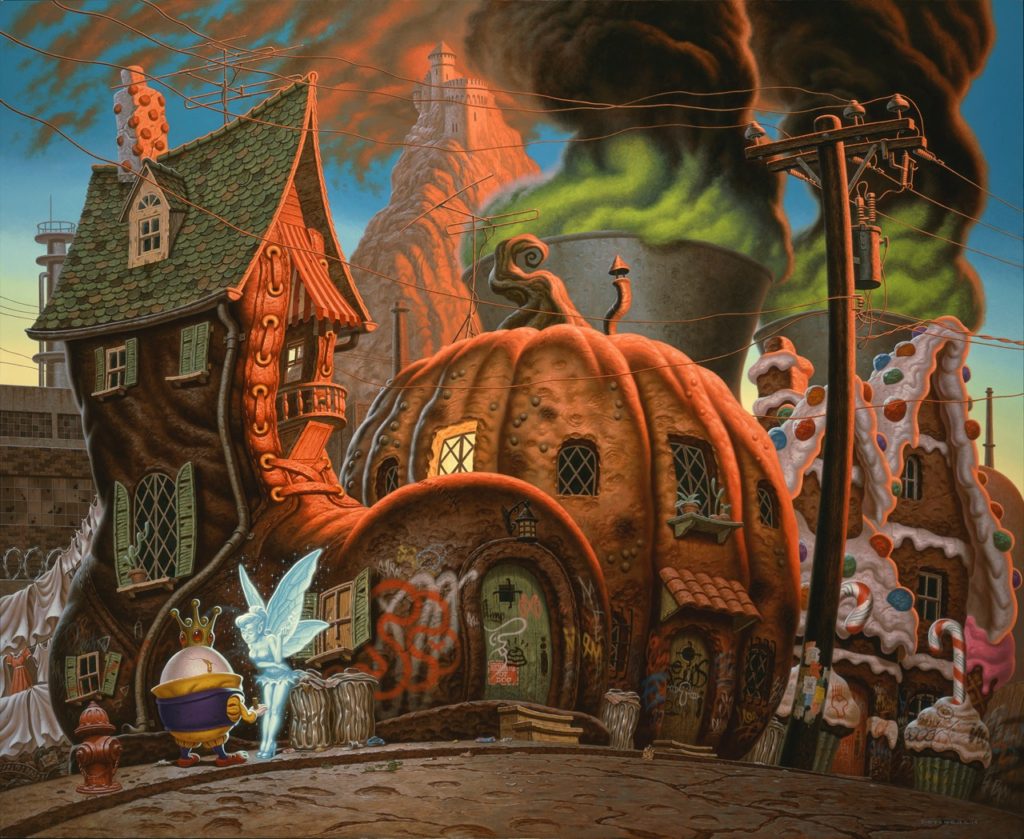
From December 2001 through February 2002 the exhibit “Secret Mystic Rites: Todd Schorr Retrospective” was organized by the Art and Culture Center of Hollywood, Florida. The museum used Schorr’s painting “Clash of the Holidays” on the invitation which provoked some outrage, with various South Florida civil leaders accusing Schorr of blasphemy.
Fortunately the controversy died down after meetings between local, state, and museum officials determined that the cost of the county’s heretic burning permit exceeded the city’s budget for the month.
This resulted in a later ruling by the Florida Supreme Court which reduced the sentence for blasphemy from burning at the stake to simple drawing and quartering, under the logic that the threat of fire damage to the Everglades superseded the rights of local preachers to protect their flocks from outside influence.
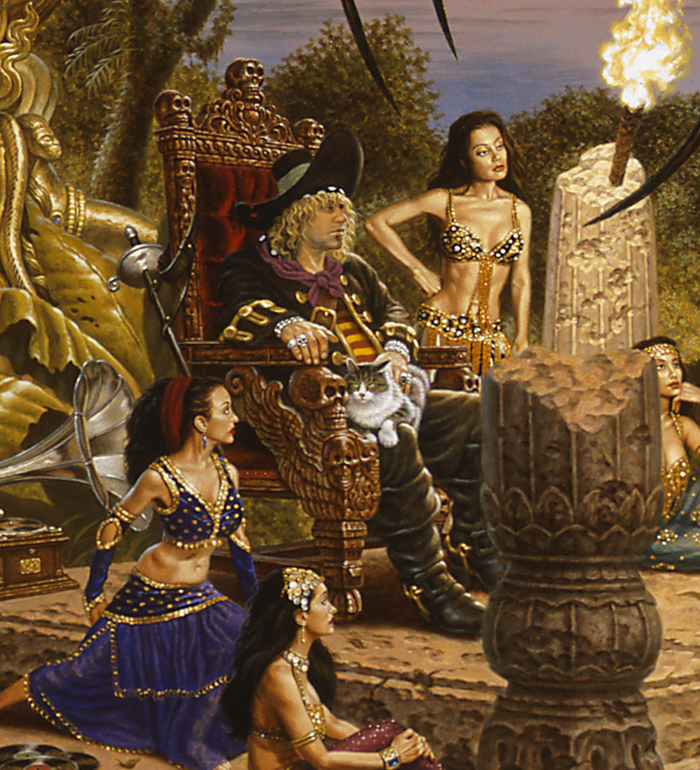
In most ways, Todd Schorr is living every artist’s dream: His beastly cartoon paintings are plastered throughout the Internet, where they are studied, discussed and analyzed for meaning on hundreds of art blogs.
AM: Many of the younger artists we talk to list you as one of their inspirations or influences. Being a dedicated artist is not easy, especially in this economic time. We know you also had some struggles when you gave up a lucrative illustration career to focus on your own personal art. Any advice for the younger generation of artists out there? Schorr: If a person has artistic inclinations and has something that by compulsion needs to be expressed, they will somehow find an outlet and hopefully be able to make a living from that talent. Unlike commercial art, where you can target the type of client or market you’d like to work for, the “fine art” gallery world is such an unpredictable mess of agendas and “of the moment” fashion posturing, that it’s folly to suggest any one path to success. However, here are a couple of important thoughts to consider. Stay true to your vision and what makes you unique while constantly seeking to evolve and improve on previous efforts. Don’t follow trends. The art world is very much tied to fashion and fads, and many young artists easily stray into these traps to gain acceptance and what they perceive as popularity. Consider yourself a very fortunate artist indeed if you manage to find just one or a couple of patrons that truly love your work and stick with you through thick and thin.
Hollywood celebrities like Leonardo DiCaprio and David Arquette collect his massive canvases. Tycoons, such as Mark Parker, the CEO of Nike, commission his work, while less well-to-do devotees settle for covering their bodies with tattooed replicas of his iconographic images.
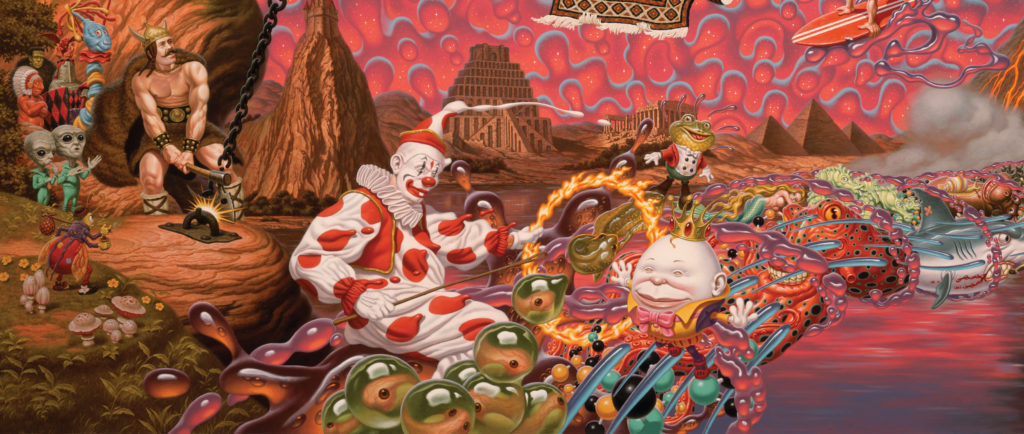
Today Schorr lives the life of a reclusive billionaire, quietly depicting the reality of a twisted cartoon otherworld while tossing scraps of lobster to his trained pack of hyenas which provide a secure front line between himself and the frothing mass of groupies camped at his gates.
Todd Schoor is brilliant!!! If you like his style, check out paintings by Robert Williams. Robt. Williams pioneered the multi-layered, low-brow painting style. -Comment found on Universal Monster Army
- NEVERLASTING MIRACLES The Art of Todd Schorr
- Paintings of Todd Schorr – surrealism.website
- Todd Schorr – Wikipedia
- Juxtapoz Magazine – Todd Schorr: An American Surrealist
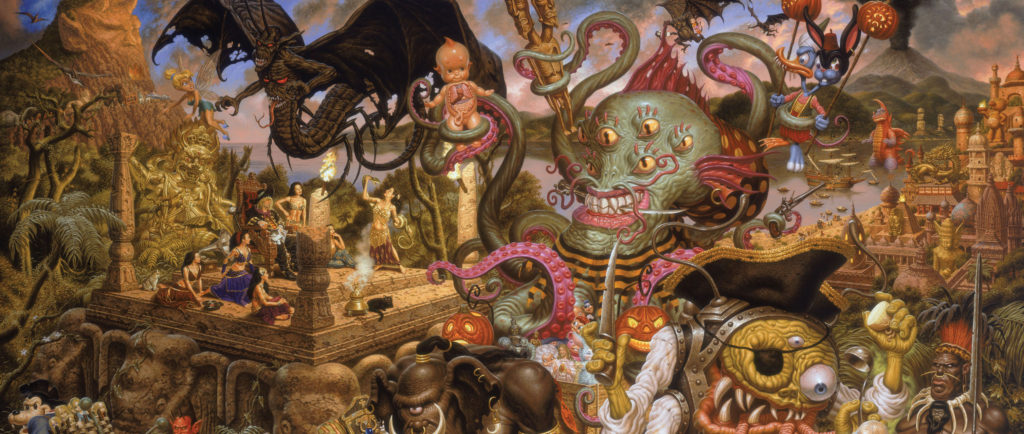
There may not be a more dedicated and industrious artist than Todd Schorr. His work ethic is legendary, his output exemplified by dogged attention to detail and skill in technique.
Such a notable career, when taken in sum, encapsulates a unique, personal vision of a conjured world in which he establishes surreal appeal by creating phantasmagorical images that mesmerize the viewer in their meticulously painted execution.
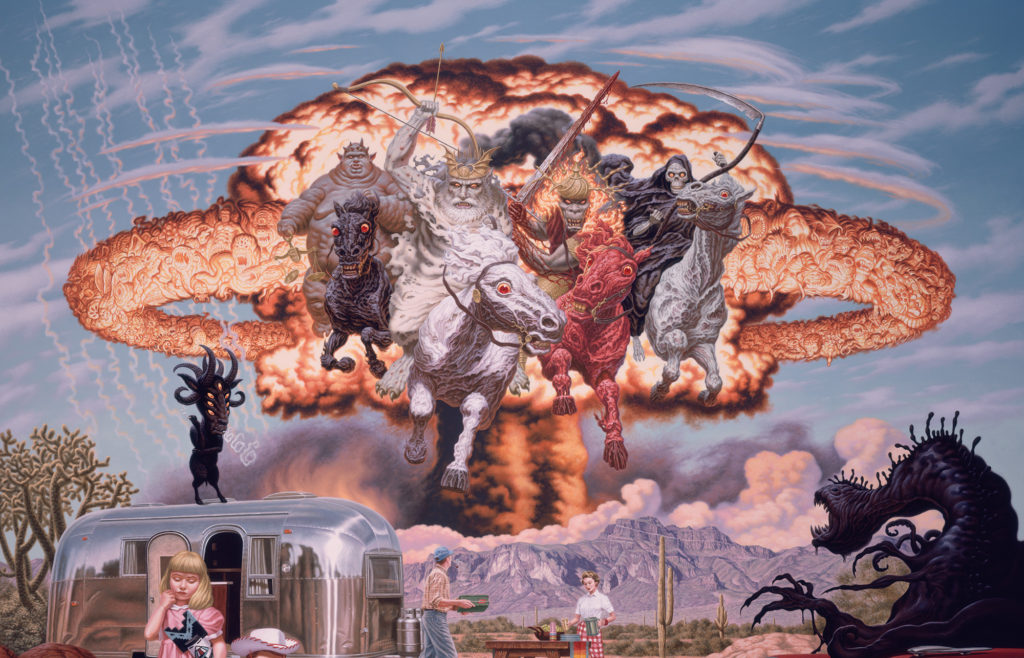
Although the label “lowbrow” may be shunned by other artists of his generation, Schorr actually validates the colloquial term and summarizes the genre’s basic traits. In other words, he takes what are often considered to be low cultural references and elevates them into significant artifacts that pulsate with intellectual viability.
Yeah, Robert Williams is pretty much THE MAN when it comes to lowbrow art, he kind of coined the term (as it applies to this movement of art) back in the early '80s, not to mention his stuff is weird with a capital W. I'd post some of his work but it rarely prominently features movie monsters. -Comment found on Universal Monster Army
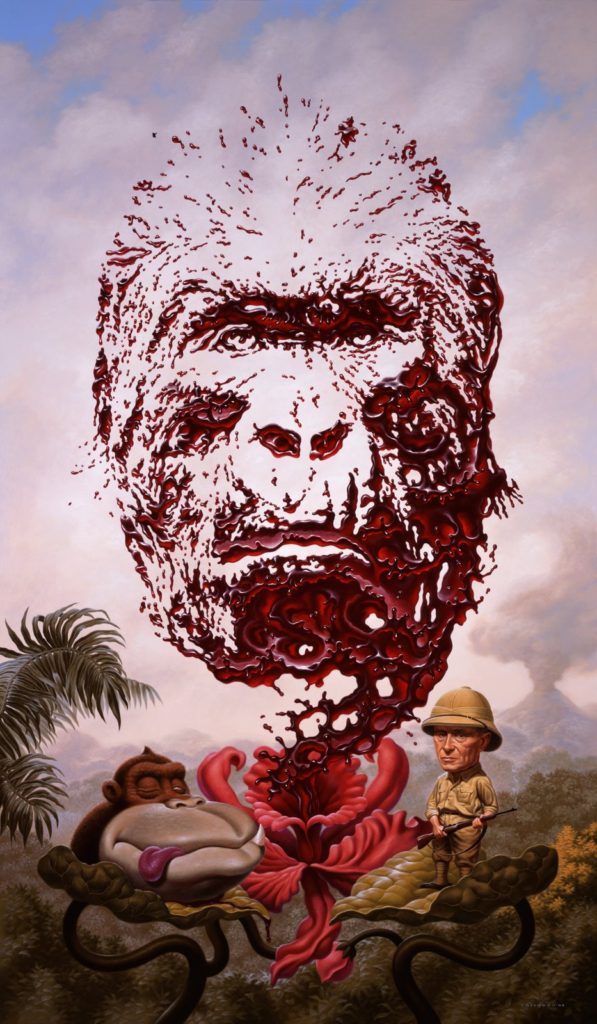
Schorr is a seminal figure in what’s known as the lowbrow school of art, an underground movement centered in Los Angeles that draws on an iconography of cartoon characters and baby boomer images from TV and pop culture. Other artists in the movement, which is also known as pop surrealism, include Camille Rose Garcia, Gary Baseman and Mark Ryden.
Since 1994, they have been steadfastly promoted in the pages of Juxtapoz Arts & Culture Magazine, a pop surrealist San Francisco-based publication.
- TODD SCHORR – The Art of Todd Schorr
- Todd Schorr – The Art and Popular Culture Encyclopedia
- Todd Schorr: American Surreal | KQED Arts
- Todd Schorr’s art? Imagine Vermeer painting King Kong
Todd Schorr’s artistic journey is one that hardly conforms to the time-honored stereotype of Bohemian artist. It is rather a post-war tale bracketed by an America infatuated with the limitless potential of consumerism.

His formative years were spent in a world surrounded by the atomic and space ages, by Saturday morning cartoons and racks of comic books at the local drug store, a land populated by Revell models, Mad Magazine, Testors glue, Mickey Mouse and Rat Fink.
My kind of guy.
Further fueling his developing image bank were the seemingly endless icons from television’s early years: Robbie the Robot, Mighty Joe Young and reel upon reel of animated toons from the likes of Tex Avery, George Pal and Max Fleischer.
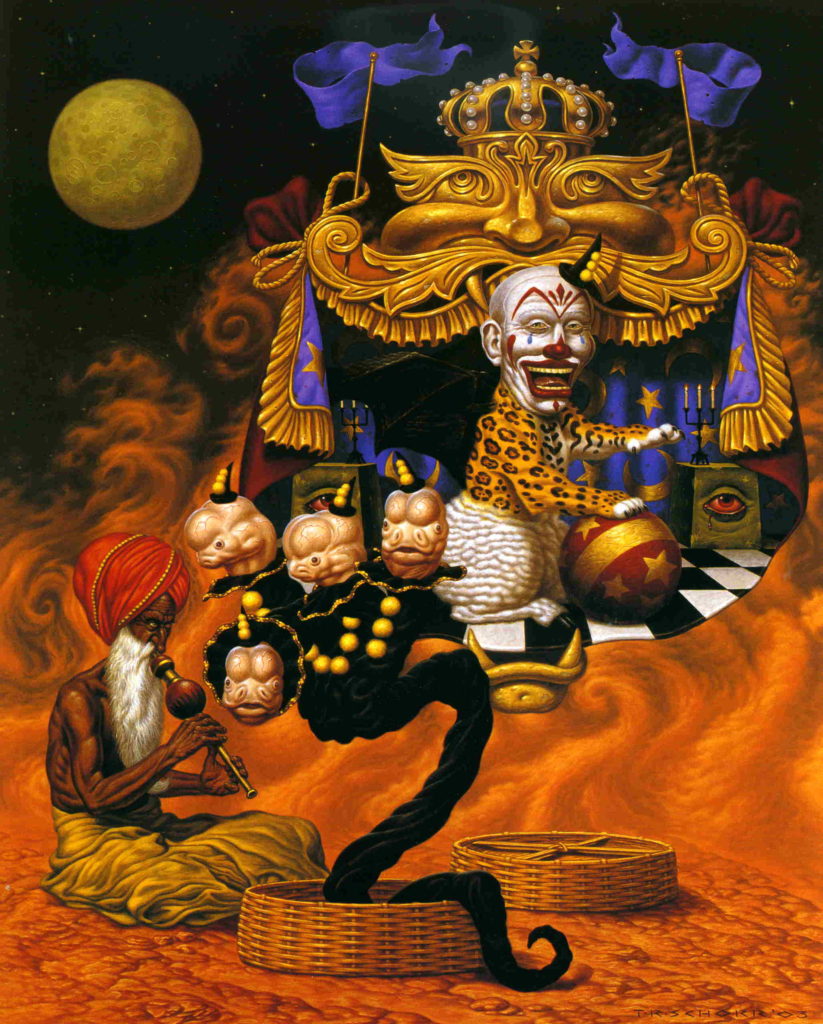
The compulsion to replicate these characters led to a formal art education and exposure to a new set of influences drawn from the world of advertising and commercial art.
Todd Schorr (born January 9, 1954) is an American artist and one of the most prominent of the group that has been dubbed "Lowbrow (art movement)" or pop surrealism. An early work is the cover of Patrick Adams Presents Phreek. Fantastic imagery, cartoon characters, and other pop culture icons rendered with an exacting technique and colorful palette defines the signature style of Schorr’s artwork. His iconic work to date is "A Pirate's Treasure Dream", 2006, which depicts a plethora of zany phantoms and animals (such as Donald Duck, Coco the Clown, and a Worry-Bird), all parading around -- none other than – the lusty Los Angeles Lowbrow (art movement) collector Long Gone John. Todd Schorr is one of the most "successful"/most expensive living artists in the Lowbrow (art movement) scene. Schorr studied Illustration and graduated from the Philadelphia College of Art. His art and illustrations have been included in Time, New York Times, and Juxtapoz Magazine, to name a few. He is married to fellow Lowbrow artist, Kathy Staico Schorr. Both live and work in Beverly Hills, California. -Art and popular culture
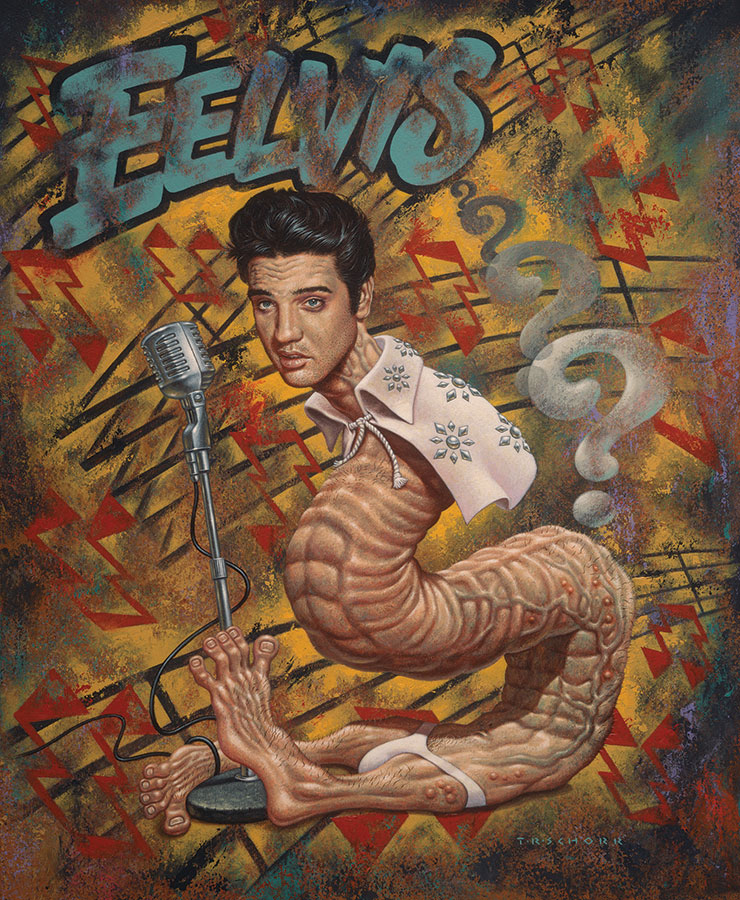
“The artwork I respond to is art that’s entertaining but also (makes) you feel the hairs on the back of your neck stand up,” he says. “It should be kind of thrilling. A total visceral response.”
Indeed, he says, if those Flemish Old Masters were living today, they’d be painting cartoons too. And, who knows, he adds, but maybe art lovers of the future will revere paintings of King Kong, Tony the Tiger and Cap’n Crunch.
“This work is going to be tremendously important 100 years from now,” Schorr asserts. “It’s so much an art of our time and place.
Movies that Inspired Me
Here are some movies that I consider noteworthy and worth a view. Enjoy.




Stories that Inspired Me
Here are reprints in full text of stories that inspired me, but that are nearly impossible to find in China. I place them here as sort of a personal library that I can use for inspiration. The reader is welcome to come and enjoy a read or two as well.









































My Poetry

Art that Moves Me


Articles & Links
You’ll not find any big banners or popups here talking about cookies and privacy notices. There are no ads on this site (aside from the hosting ads – a necessary evil). Functionally and fundamentally, I just don’t make money off of this blog. It is NOT monetized. Finally, I don’t track you because I just don’t care to.
- You can start reading the articles by going HERE.
- You can visit the Index Page HERE to explore by article subject.
- You can also ask the author some questions. You can go HERE to find out how to go about this.
- You can find out more about the author HERE.
- If you have concerns or complaints, you can go HERE.
- If you want to make a donation, you can go HERE.

